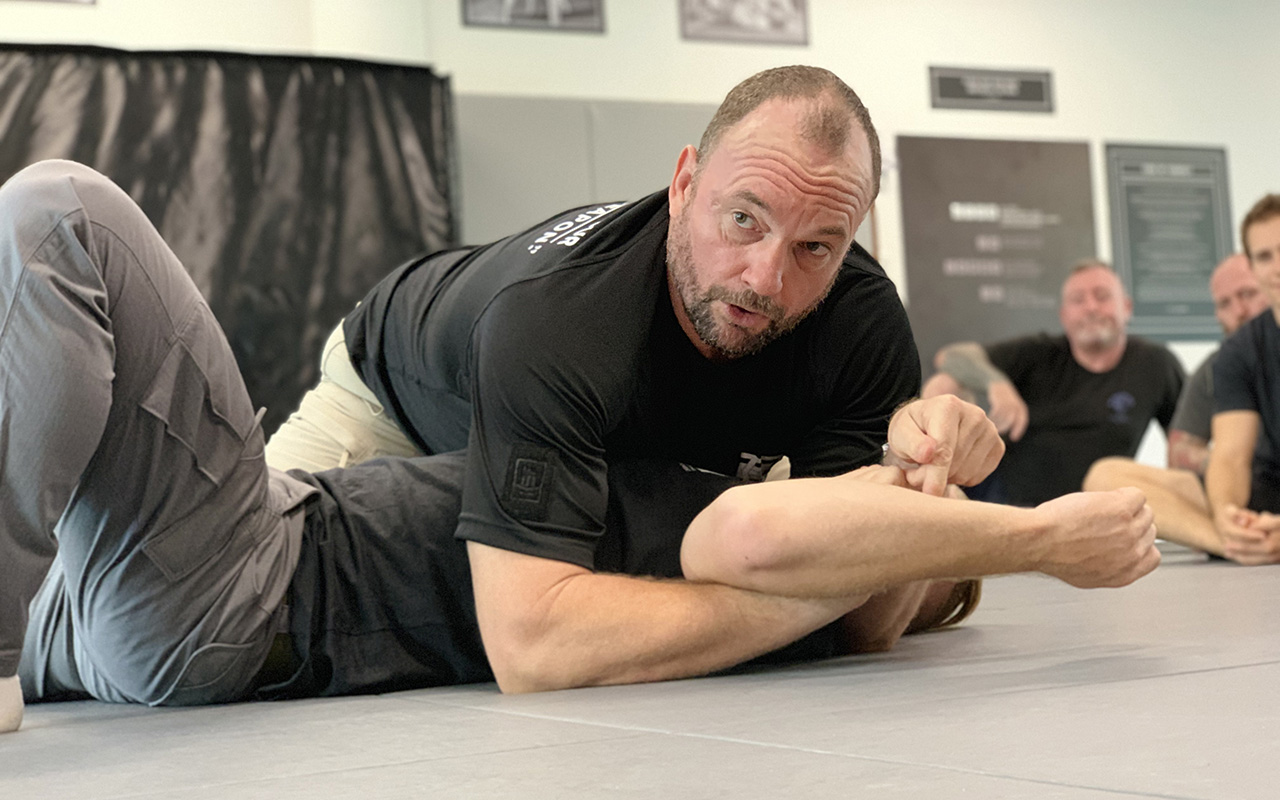
- This event has passed.
Combative Grappling – Melbourne
March 3, 2024 @ 10:00 am - 2:00 pm

Train in Paul Cale’s world-leading close-combat program used by the Australian Special Forces & Army, tailored for everyday self-protection.
The Personal Combatives courses in the KEF–IC syllabus use the same principles and core techniques as the Australian Army Combatives Program (ACP). The difference? You learn only what’s applicable to tackling violence as a civilian. Battlefield rules of engagement are replaced with the laws of self-defence, and a soldier’s weapon systems are replaced with your body, and whatever you can legally carry or find at hand. But the mindset remains the same.
A veteran of multiple combat tours with the 2nd Commando Regiment, former Sergeant Paul Cale literally rewrote the book on Special Forces Close-Quarter Fighting (CQF). He then created Infantry Integrated Combat (ICC), which later became the foundation for ACP — now the official close-combat training system for Australia’s general Army.
Kinetic Fighting is the culmination of all of Cale’s work in combatives, and the name used to describe the method underpinning his military programs. Whether you want to learn mental strategies and tactical applications to make your existing martial arts skills more effective, or you need to build effective self-protection skills from the ground up, this course is for you.
You may even want to take your first steps toward a KEF–IC black belt. KEF–IC (Kinetic Fighting–Integrated Combat) is a new program within the Australian Army that combines tactical combative skills with free sparring/rolling and the competitive elements of the Integrated Combat Clubs, which are located at Army barracks Australia-wide. As an extension of ACP, KEF–IC provides the training principles and core syllabus required to give soldiers a survival skill set, and mindset to match. Every element of KEF–IC is focused on real combat and was taught to non-military personnel for the first time in 2019.
ON THIS COURSE, KEF–IC INSTRUCTOR JUSTIN QUBROSI WILL TEACH CALE’S BATTLE-PROVEN PRINCIPLES AND SURVIVAL TACTICS, WHICH ARE:
- Adaptable to any martial art or professional operational procedure
- Suitable for civilians & front-line operators, from beginners to professionals
- Backed by Paul Cale’s 25+ years of career military experience & 40 years in martial arts, as well as Justin’s own extensive experience and qualifications (see below Course Details)
COURSE DETAILS:
The Combative Grappling course teaches the essential tactics and techniques of grappling to overcome a committed assault — and how to adapt BJJ/sport grappling skills for survival, and to fit policing Rules of Engagement (ROE).
In this session (the KEF–IC Echo module), you’ll learn how to out-grapple an opponent when lives are at stake, rather than competition points. Over four hours, you will hone vital strategies and skills to survive life-threatening situations where you are on the ground and under attack. You will also drill ground-fighting responses for when weapons are, or could be, in your assailant’s possession.
The core skills and drills of this module provide the framework for adapting sport jiu-jitsu skills to combat real violence, or learning the essentials from scratch. Together, they develop the following key aspects of grappling for self-protection:
- Targeting your attacks to stop threats rapidly
- Weapon awareness, pre-emptive response and counters
- Supine (guard) offence and recovery tactics
- Shoulder lock variations and controls for key tactical positions
- Clinching with a weapon
- You will also receive a comprehensive training booklet, along with a certificate and badge (which adheres to KEF–IC training gear) denoting your completion of this module in the Kinetic Fighting system.
Prerequisites:
